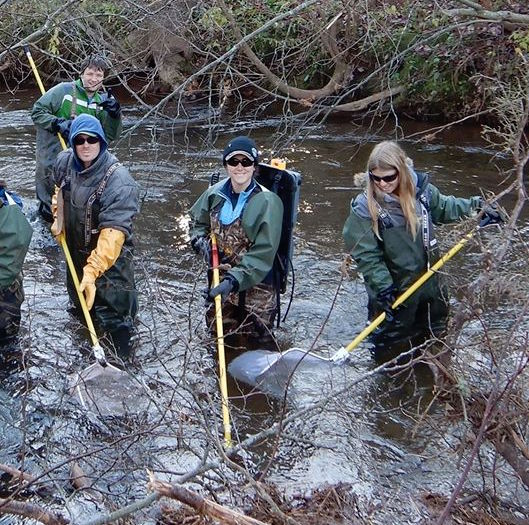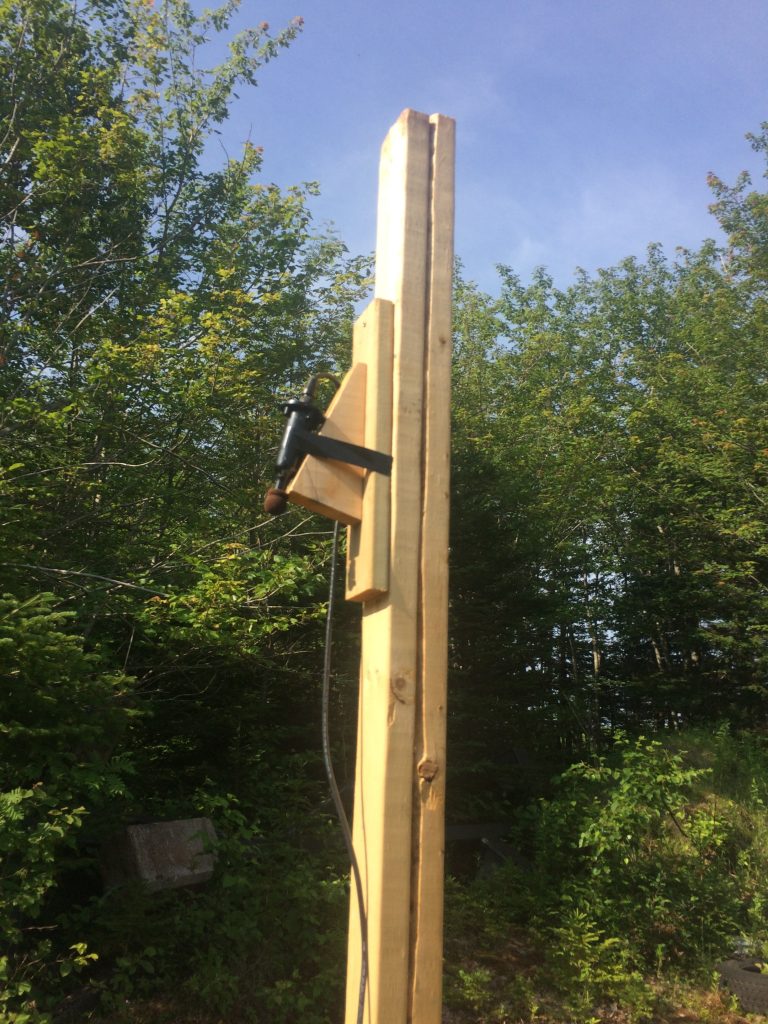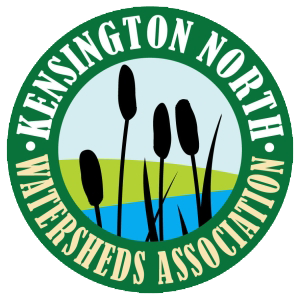Much of the work done by watershed groups is to improve habitat for wildlife, by improving water quality and planting a greater variety of plants and trees. One way to get feedback on the health of our watershed area is through surveying the wildlife in the area.
Reporting a wildlife sighting of a plant or animal that you found interesting is called incidental reporting or citizen science. You can share these observations on sites like PEI Nature Tracker or iNaturalist. The accumulation of these observations by numerous people can make valuable data.
Along with the PEI Invasive Species Council we especially keep an eye open for invasive species which can throw off the balance of our natural ecosystem.

We count the fish at selected locations in our streams every year with the use of an electrofisher. The device briefly stuns the trout to allow assistants to scoop them up with long-handled nets.

We’ve done some targeted wildlife surveys in coordination with Fish & Wildlife. In February to April of 2020 we visited estuaries every two weeks and conducted surveys for winter water fowl, and throughout the rest of the year we monitored trail cams which were set up in possible otter habitat and we did see some otters on camera!
Since 2018, Kensington North has been partnering with researchers from the Canadian Wildlife Health Cooperative to monitor bat populations in our area. For one week in July, we set up four acoustic bat monitors in different areas of our watersheds. These monitors record bat activity as “bat passes” and can give us insight into how much bat activity is happening in our area.
Staff also perform a mobile bat survey, which includes attaching a microphone to the outside of a car. At dusk, staff then drive along a predetermined route at a slow speed to count individual bat passes.

